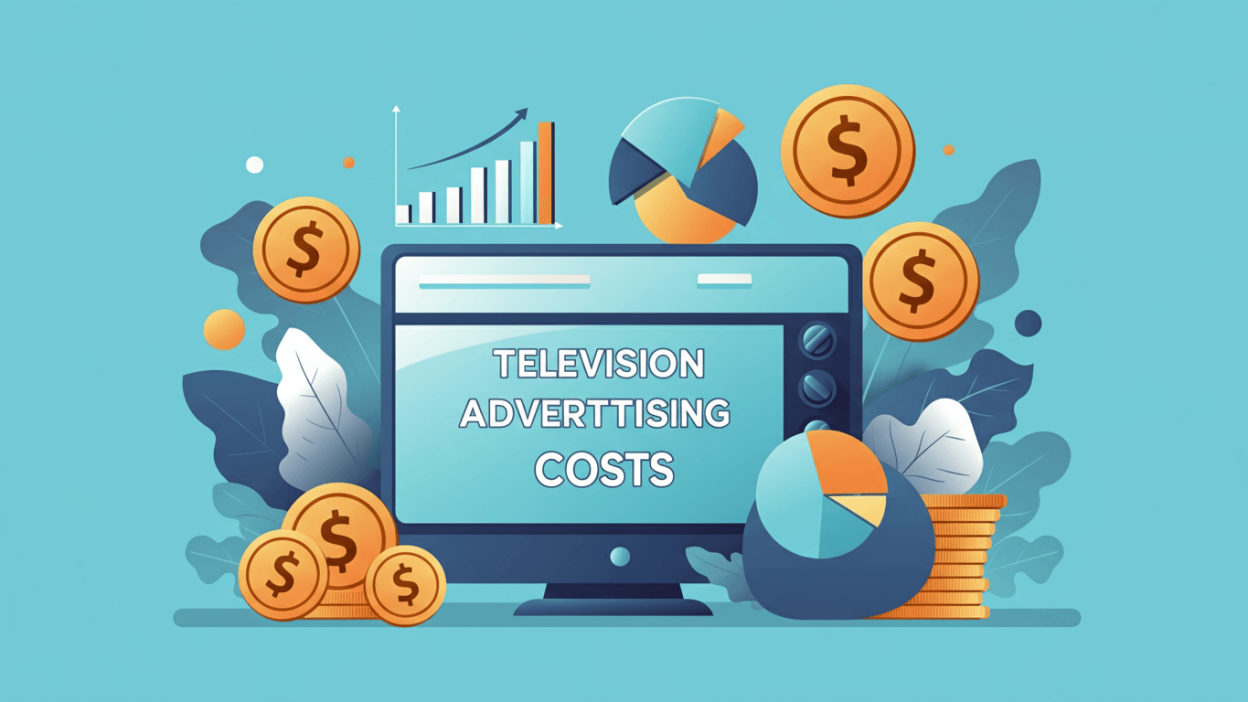If you’ve ever wondered, “How much does television advertising cost?” you’re not alone. TV advertising remains one of the most effective ways to reach a broad audience, even in the age of digital and social media. But with its effectiveness comes varied costs that can leave even seasoned marketers scratching their heads. Understanding these costs can help you make informed decisions and craft a strategy that aligns with your business goals and budget.
This blog will break down the key factors influencing television advertising costs, what you might expect to pay, and alternatives to ensure you get the most bang for your advertising buck.
The Basics of Television Advertising Costs
Television advertising costs aren’t one-size-fits-all. They vary significantly based on factors like the channel, time of day, location, and even the duration of the advertisement. Here are the main components that determine how much it’ll cost to run your ad on TV:

1. The Air Time
The time slot during which your ad will air is one of the most significant factors driving costs. Prime-time slots (usually between 8 p.m. and 11 p.m.) on national networks are the most expensive because they attract the largest audiences.
On average:
- A 30-second spot during the Super Bowl in 2023 cost $7 million.
- A national ad during a prime-time show might cost between $100,000 and $500,000.
However, if you opt for local advertising:
- A prime-time 30-second ad spot could range from $200 to $1,500, depending on your market size.
2. The Length of the Commercial
The standard length for a TV ad is 30 seconds, but depending on your goals and budget, you can also buy shorter or longer spots. Here’s how duration typically affects costs:
- 15-second ads cost around 50–60% of a 30-second ad.
- 60-second ads cost approximately double the price of a 30-second spot.
Pro tip: Shorter spots (15 or even 10 seconds) can be a budget-friendly way to deliver a concise, impactful message.
3. The Channel
Different TV networks appeal to different audiences, which affects their demand and pricing structure. For instance:
- Premium channels like ABC, NBC, and Fox command higher rates due to their reach and high-profile programming.
- Niche or cable channels like HGTV or Food Network may charge less but still offer access to highly targeted audiences.
If you’re aiming to advertise on streaming channels with ad slots (e.g., Hulu or YouTube TV), the costs are generally lower than national TV but often higher than traditional cable.
4. Geographic Reach
Your ad’s geographic reach also plays a critical role in determining costs. National campaigns are, understandably, pricier than local ones.
- National campaigns are ideal if you have a broad target audience or want significant exposure.
- Local campaigns, by contrast, are better for focusing on specific cities or regions without breaking the budget.
For example:
- A local ad in a rural area might cost $200–$500 per 30 seconds.
- A similar ad in a major city could climb to $5,000–$20,000.
Additional Costs to Consider
When budgeting for TV advertising, it’s essential to account for more than just air time. Here are a few other costs you might face:

1. Production Costs
Creating a high-quality, engaging commercial is just as important as buying air time. Production costs depend on the complexity of your ad. For example:
- Small-scale local ads can cost between $1,500 and $3,000.
- Professional, polished campaigns intended for national audiences might range from $10,000 to $50,000 or more.
Factors influencing production costs include scriptwriting, casting, video editing, special effects, and even location permits.
2. Frequency
Repetition is key in advertising. Running your ad once or twice might not have a noticeable impact. For effective TV advertising, a campaign often requires airing your commercial multiple times over weeks or months. This repetition can significantly increase costs.
3. Agency Fees
If you hire an advertising agency to handle your campaign, you’ll need to factor in their fees for services such as media planning, buying air time, and managing creative content.
Is Television Advertising Worth the Cost?
With all these expenses, you might wonder whether TV advertising is still worth it in today’s digital landscape. The truth is, television remains a valuable platform, especially in these situations:
- You want broad reach: TV can deliver your message to millions of viewers simultaneously.
- You aim to build trust and credibility: A well-produced TV ad can elevate your brand’s status.
- You’re targeting specific demographics: TV networks (or specific shows and times) can connect you with the right audience.
For small businesses that can’t afford large-scale campaigns, local TV advertising offers a more accessible entry point. Pairing TV with digital strategies (e.g., retargeting ads online or linking to social media campaigns) can also help stretch your budget.
How to Get Started with TV Advertising

If you’re ready to explore TV advertising but want to keep costs manageable, here are a few things to keep in mind:
- Set Clear Goals: Define what you want to achieve with your ads, whether it’s brand awareness, lead generation, or sales.
- Start Small: Local campaigns are a great way to dip your toes into TV advertising without overspending.
- Leverage Data: Use analytics and audience data to choose the best times, locations, and demographics for your ads.
- Work with Experts: Partner with media buying agencies or consultants who can negotiate competitive rates and maximize your ad spend.
Alternatives to Traditional TV Advertising
If TV advertising feels out of reach or isn’t the right fit for your goals, consider these alternatives:
- Streaming Services Ads (e.g., Hulu, Peacock): These platforms offer targeted advertising options at a fraction of the cost of traditional TV.
- YouTube Ads: With billions of active users, YouTube provides flexible pricing and exceptional audience-targeting features.
- Social Media Video Ads: Platforms like Facebook, Instagram, and TikTok allow you to create and distribute video content optimized for specific audiences.
- Programmatic OTT Ads: These ads play on smart TVs and connected devices, providing the benefits of TV with the targeting precision of digital marketing.
Make Television Advertising Work for Your Business
Television advertising costs vary based on your goals, location, and target audience, but they remain a powerful tool for delivering your message to a wide audience. By understanding the factors that influence pricing, you can craft a campaign that aligns with both your budget and your business objectives.
While understanding the cost of television advertising is crucial for budgeting traditional media campaigns, exploring how augmented reality is transforming inbound marketing reveals how emerging technologies can offer more immersive and cost-effective alternatives for engaging modern audiences





